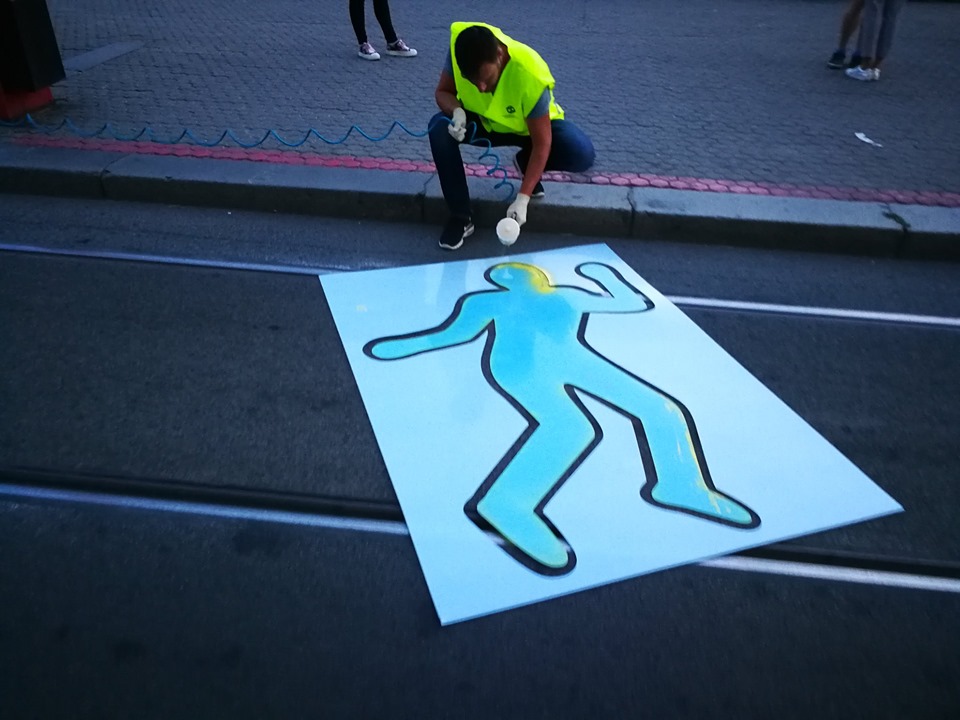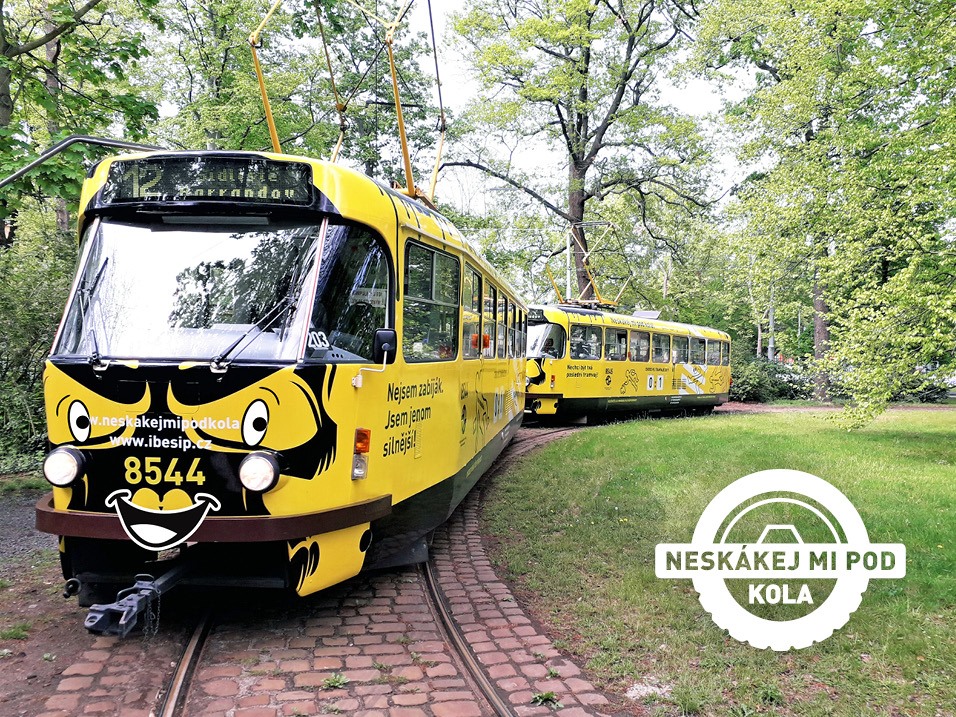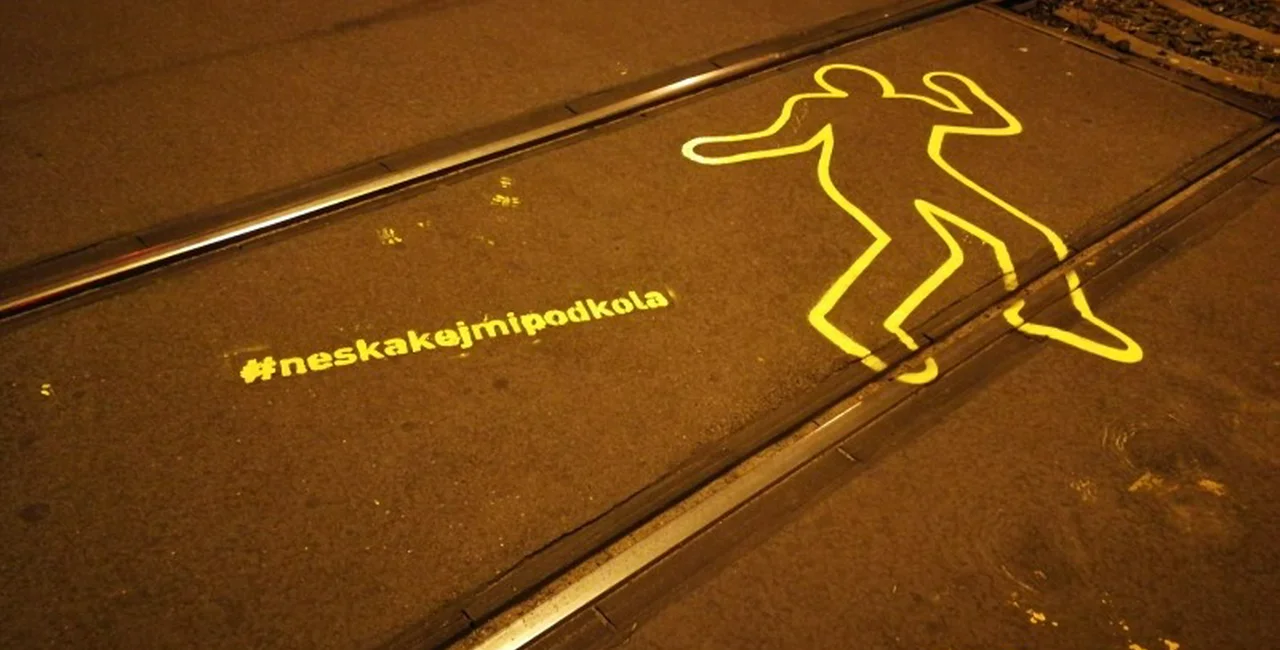Painted body outlines of fallen pedestrians on tram tracks are the latest measure to try to warn people to avoid accidents. This rather graphic step is part of the ongoing “Neskákej mi pod kola!” (Don’t jump under the wheel!) safety campaign.
The number of tram
accidents has been rising in the long term. In 2018 there were 104
collisions with people, and eight of those were fatal. That was a
slight drop from the 2017 record of 111 collisions, but that year
there were just three fatalities. In 2007, there were 74 collisions
with people and five fatalities.
PARTNER ARTICLE
The body outlines,
reminiscent of a crime scene investigation, were sprayed at places in
Prague with the high risk of a tram and pedestrian collision. The
project is a joint venture of the Prague Public Transit Company (DPP)
in cooperation with safety organization BESIP, the Czech Police and
regional transit organizer ROPID.
Prior to the outline campaign, a yellow-painted tram with warnings was put into service to raise awareness to the same issue.
“We are constantly trying to remind everyone before crossing the tracks to look around and see if they are at risk. To our preventive tram, which has been operating in Prague since March, we have added significant spray-painted silhouettes to remind people that they may be in immediate danger when crossing the tracks,” Prague Deputy Mayor Adam Scheinherr (Praha sobě) said. He is also Chairman of the DPP Supervisory Board.
“It is the next
phase of the project that is definitely not over, because people are
unfortunately still making the same mistakes and it can even cost
them their life,” he added.
The campaign is
intended to remind people that trams have priority at intersections.
Because trams are on tracks, they cannot stop quickly, even if the
driver sees the pedestrian on the tracks.
“The stopping distance of a tram from a speed of 50 kilometers per hour is 42 meters, while a passenger car slows down in about 13 meters. Unlike a driver of a car or a bus, which, in addition to reducing speed can swerve to avoid an obstacle, the tram, which runs on rails, has no room for maneuvering,” BESIP regional coordinator Jiří Polomis said.

The silhouette spots were chosen according to the frequency of both pedestrians and tram traffic. These are: IP Pavlova, Karlovo náměstí, Palackého náměstí, Národní třída, Staroměstská, Malostranská, Palmovka, Flora, Želivského, Hradčanská, Masarykovo nádraží, Dvorce, and Anděl.
The body outlines
may seem like an extreme measure, but the DPP says that so far
traditional ways of communication methods have proven ineffective.
“Since last year where there were 104 tram-pedestrian clashes, DPP
has put dramatic slogans, stickers and now the painted silhouettes in
place. Unfortunately, the number of clashes has not fallen,” DPP
head of tram operations Petr Hloch said.
“For the first
half of this year, DPP recorded 45 [accidents]. This year only one
pedestrian died in the first six months, and last year for the same
time it was six, so that is an improvement of 600 percent, but this
number is not zero. We are trying to achieve this with this campaign.
The tram and pedestrian collision is still quite frequent,” he
added.

Municipal Police Director Tomáš Lerch said pedestrians often do not realize that the law imposes obligations on them as road users. “Due to the driving characteristics of trams, pedestrians should be particularly careful when crossing the tramway. As a general rule, pedestrians must not enter the crossing or road immediately before an approaching vehicle. The same rule applies to trams. Wherever pedestrian crossings are not controlled by light signals, let us remember the basic rule that a pedestrian does not take precedence over a tram,” he said.
The most common mistakes made by pedestrians in relation to trams, which often have fatal consequences, are not giving priority to a tram at a pedestrian crossing, crossing just in front of a tram, looking in the opposite direction, or entering the road in front of starting a tram.
A separate chapter, according to DPP, is pedestrians with earphones who cannot hear the arriving tram and cannot respond in time to danger. In addition, there are pedestrians who continue to look at their mobile phones while they are walking around instead of paying attention to where they are going.












 Reading time: 3 minutes
Reading time: 3 minutes 

























